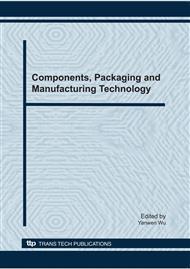p.136
p.142
p.148
p.153
p.159
p.165
p.172
p.178
p.184
Fast and Non-Destructiveness Discrimination of Varieties of Fragrant Mushroom Using Near Infrared Spectroscopy
Abstract:
Visible/near-infrared spectroscopy (NIRS) is the millimeter wave ,It is the high speed and non-destructiveness method, high precision and reliable detection data, is a rapid and non-destructiveness method for discrimination varieties of Fragrant mushrooms by means of VIS/NIR spectroscopy was developed in this study. The relationship between the reflectance spectra and Fragrant mushrooms varieties was established. The spectral data was compressed by the wavelet transform (WT). The features from WT can be visualized in principal component (PC) space, appeared to provide a reasonable clustering of the varieties of Fragrant mushrooms. The fivet principal components computed by PCA had been applied as inputs to a back propagation neural network(BP) with one hidden layer. The 220 samples of four varieties were selected randomly to build BP model. This model was used to predict the varieties of 40 unknown samples. The predict recognition rate has achieved 99.5%. This model was reliable and practicable.
Info:
Periodical:
Pages:
159-164
Citation:
Online since:
January 2011
Authors:
Price:
Сopyright:
© 2011 Trans Tech Publications Ltd. All Rights Reserved
Share:
Citation:


